Humans and other animals need food to eat to live. What do plants eat? They don’t exactly eat, but they do take in nutrients as we do in order to survive and grow. While humans eat, plants produce their own food by taking materials from their environment.
Although plants don’t eat like animals do, plants consume a sugar called glucose. Plants make glucose through a process called photosynthesis, where they use water, air (carbon dioxide, CO2), and light to create glucose.
Plants take carbon dioxide from the air and combine that with sunlight and water. Plants also take nutrients from the soil, as well as water, to help in the photosynthesis process. Artificial light may be used in some cases.
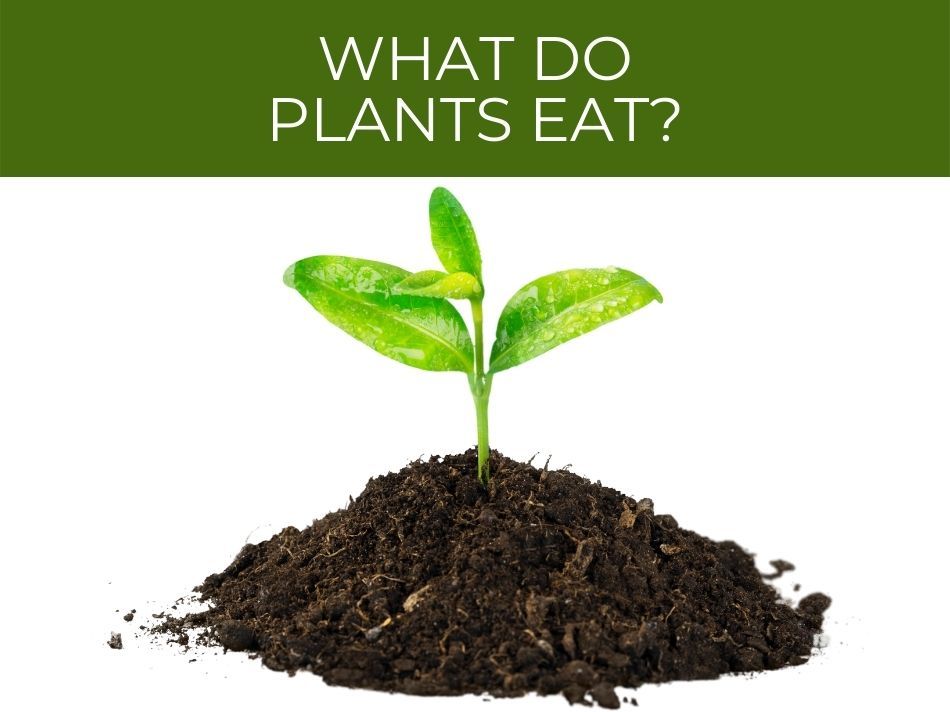
What do plants eat?
Plants take the carbon dioxide out of the air, which is great for the environment and produces oxygen that we need.
Plants keep us alive in two ways then, producing oxygen, and producing the food we eat.
Plants “eat” a kind of sugar called glucose to grow and maintain themselves. They produce glucose using photosynthesis, where they absorb carbon dioxide (CO2) in the air through their leaves, water through their roots, and light to produce glucose.
Carbon dioxide comes from many sources, including pollution.
Plants clean up some of that pollution but cannot clean it all up.
If plants were not doing that and producing oxygen, we could eventually run out of oxygen on the planet.
There are things we can do that will either help plants grow or give them obstacles to growth.
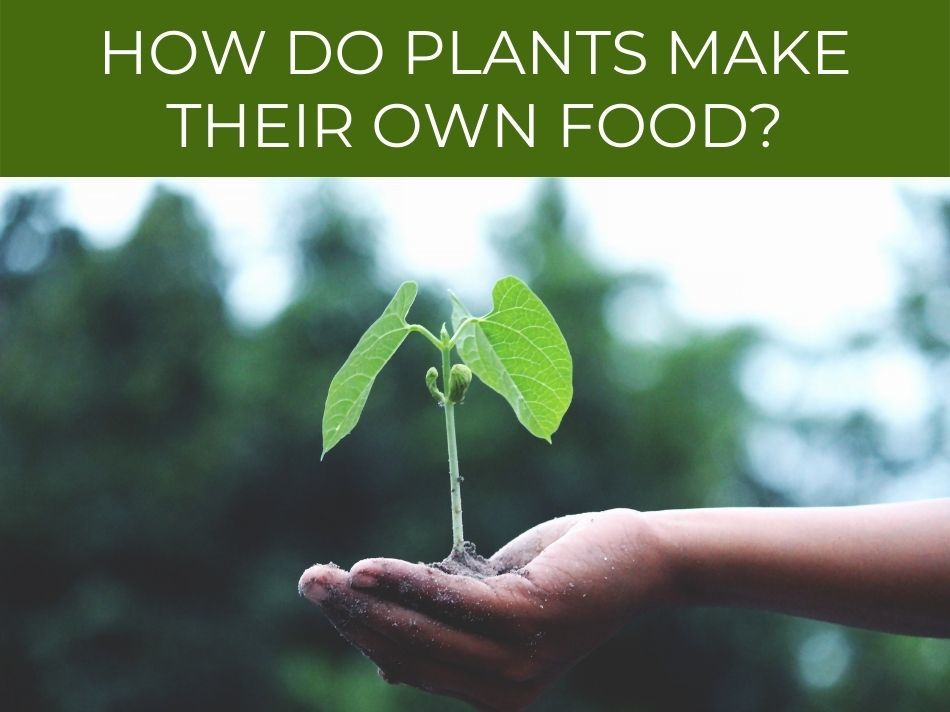
How do plants make their own food?
Plants get their nourishment from their environment naturally, combining air, soil, and sunlight.
The quality of all three of these ingredients determines how well a plant will do.
Photosynthesis is the process where plants convert air (carbon dioxide, CO2) and water to make glucose that they store as food. Roots absorb water and leaves absorb carbon dioxide. When that is combined with light, glucose and oxygen are produced.
Water coming up from the roots gets mixed with the carbon dioxide the leaves have taken in.
This produces chlorophyll that makes plants green.
When sunlight hits the chlorophyll, it produces glucose and oxygen.
Chlorophyll is in what is called chloroplasts, tiny particles inside cells of plants which is where the action is.
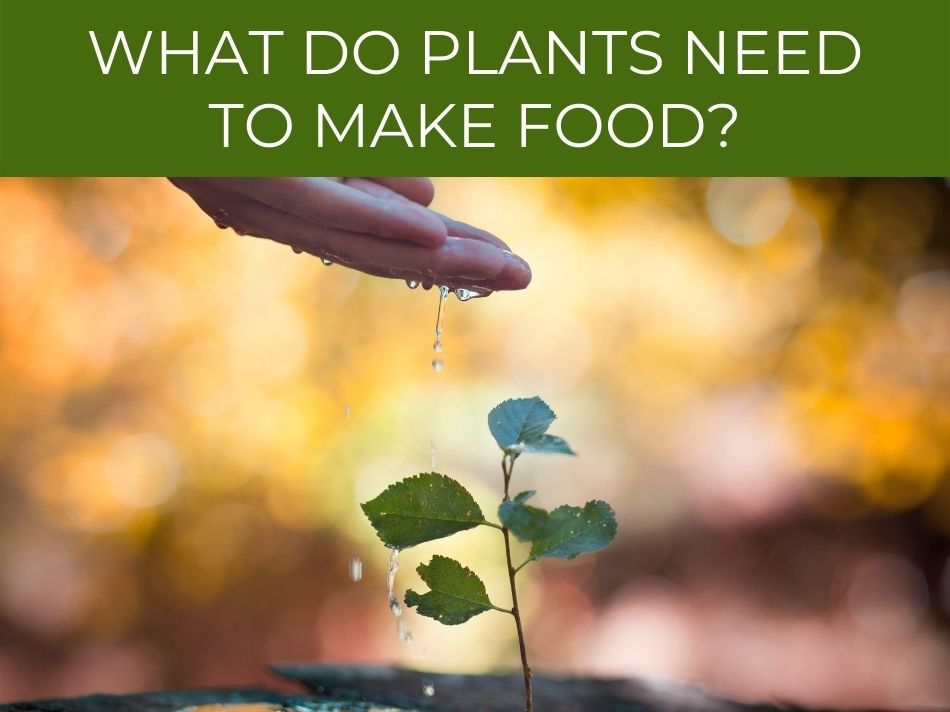
What do plants need to make food?
Plants need light, soil, and water to make food, but it gets more complicated.
Chlorophyll is also essential to the process.
All of these things come together and are all happening all over the plant’s leaves at the same time.
The quality of the ingredients affects the health of a plant and how much it can grow.
Plants need chlorophyll–a green pigment–as the catalyst for making their own food. In addition to chlorophyll, plants need air, water, and light to make their own food. They also need a period of darkness to be most effective at producing the glucose sugar they need to grow.
All plants, including algae, and some microorganisms, use the same process to produce their own food.
There are things we can do to help, or hinder, the growth of plants.
Adding fertilizer adds nutrients the plant can absorb through its roots and helps plants grow.
Find out if the color of light affects plant growth.
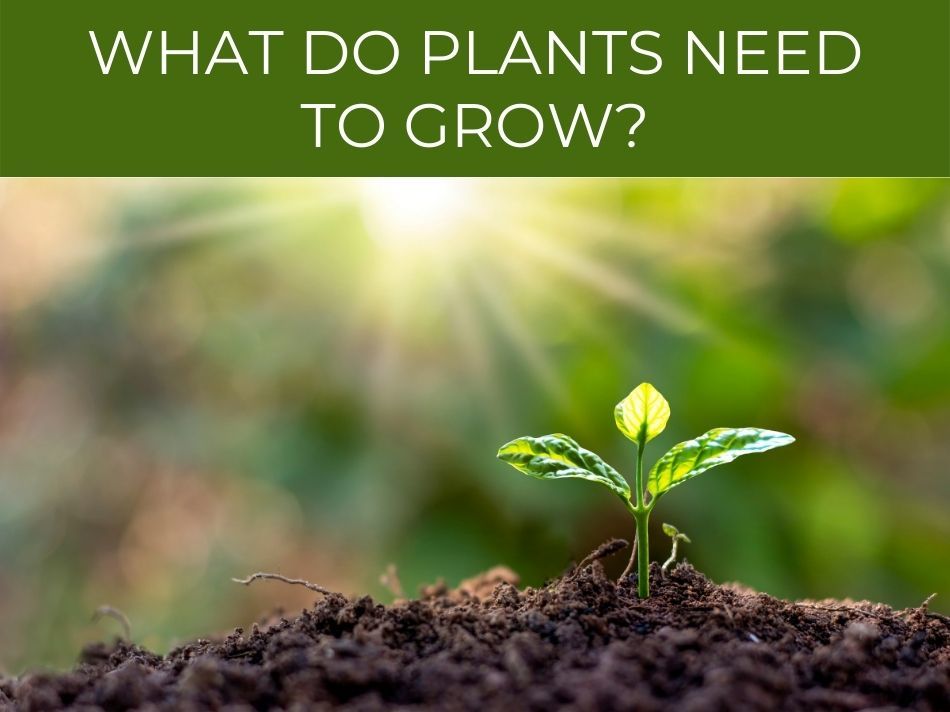
What do plants need to grow?
People have known how to help plants grow for thousands of years, though they may not have known about the process.
Now that we know the process, we can help plants grow, which makes them more healthy and more productive.
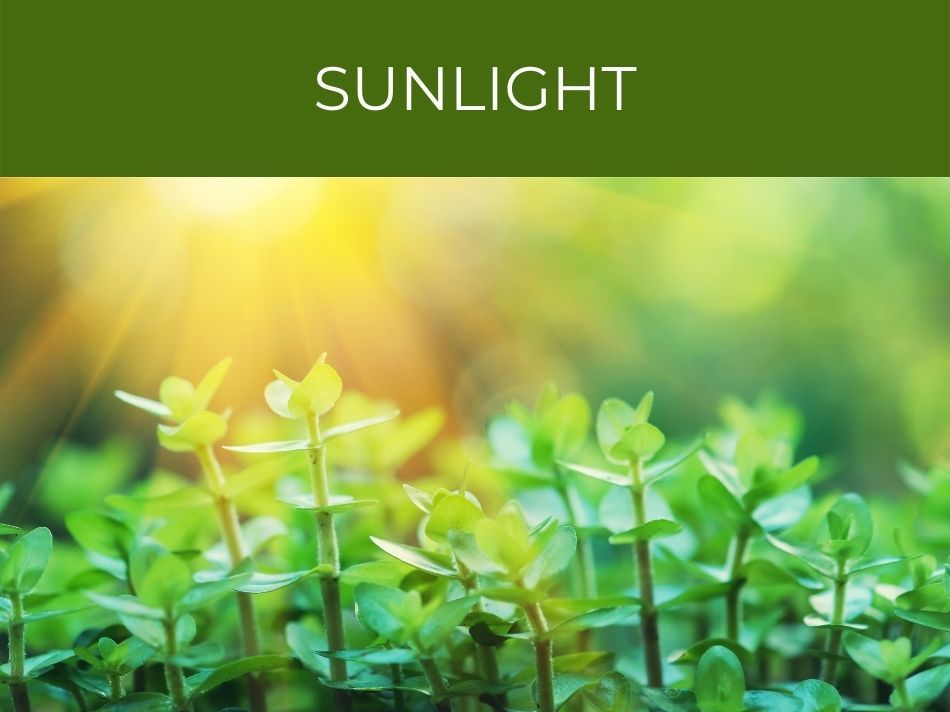
Plants need the right amount of light, water, and carbon dioxide (CO2) to grow.It is the combination of these 3 things that produce the glucose plants need to grow. Plants also need their roots to take in water and nutrients, and their leaves to convert carbon dioxide into energy.
We can help plants get what they need, or we can hinder the process.
Plants need nitrogen, phosphorus, and potassium from the soil.
We can add those as fertilizer.
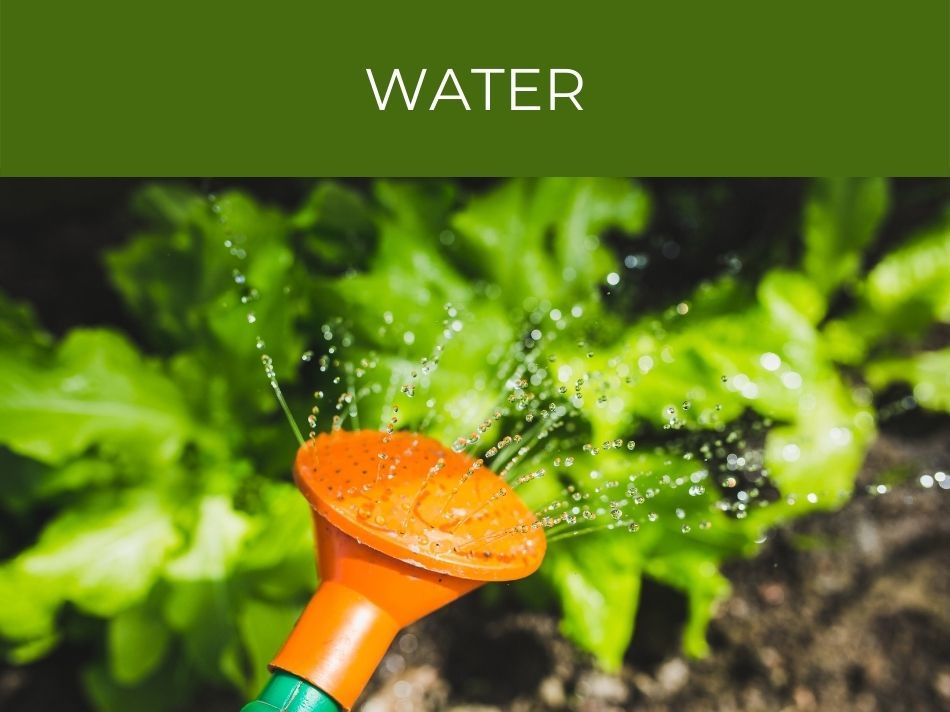
We can also control the amount of water, and there is a balance.
Too much can be as harmful as not enough. Indoors, we can control the light to also help the process along.
See our article on how to determine how much sunlight a plant needs.
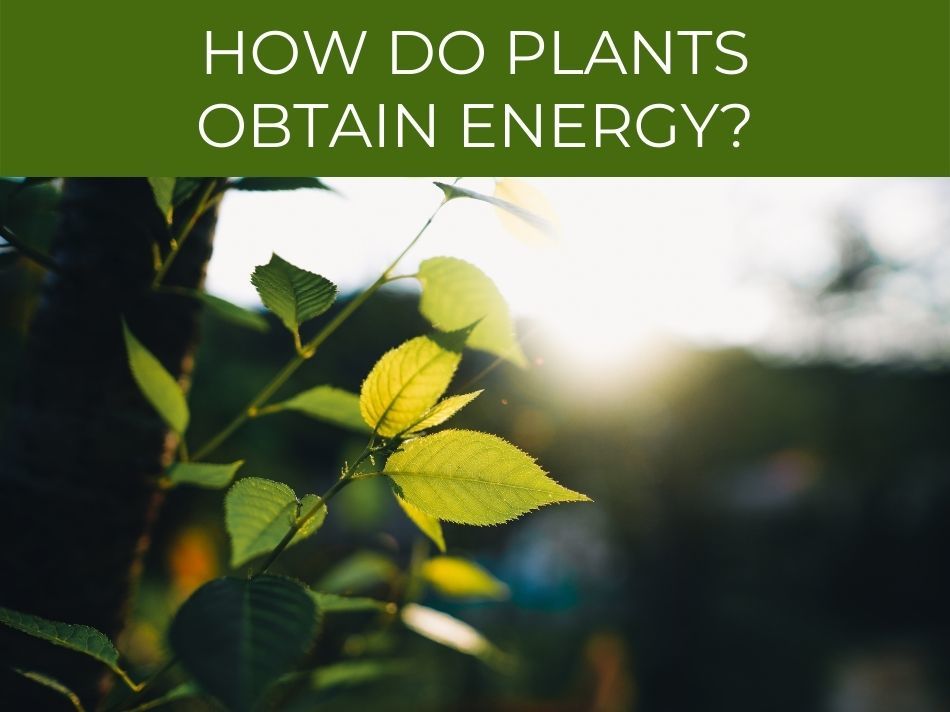
How do plants obtain energy?
The energy from the sun, or artificial light, is the energy that causes the reaction in plants called photosynthesis.
It is the sun’s energy that causes photosynthesis to happen.
The light hits chloroplasts, which produce chlorophyll.
Chlorophyll reacts with light to produce the energy the plant needs.
Plants don’t give off energy but they use it in the photosynthesis process to produce the energy they need.
Plants get their energy from light–either sunlight or artificial light–and use light, along with water and carbon dioxide (CO2) to produce a sugar called glucose. Plants use the process of photosynthesis to convert water, CO2, and light into the glucose they need to live.
Photosynthesis begins when light hits the chloroplasts, which converts the energy of light into what it needs to grow.
Plants use light energy from the sun, which results in the plant building up carbohydrates that it will convert to energy or store for later use.
The stored carbohydrates are called polysaccharides, which are also called starch.
It is through the chloroplasts that the plant is able to produce the chlorophyll that reacts with the sun’s energy.
The reaction of light to chlorophyll is what creates energy in the plant.
Animals get their energy by consuming something, while plants get their energy through a chemical reaction to light, water, and nutrients.
See the inputs and outputs of photosynthesis.
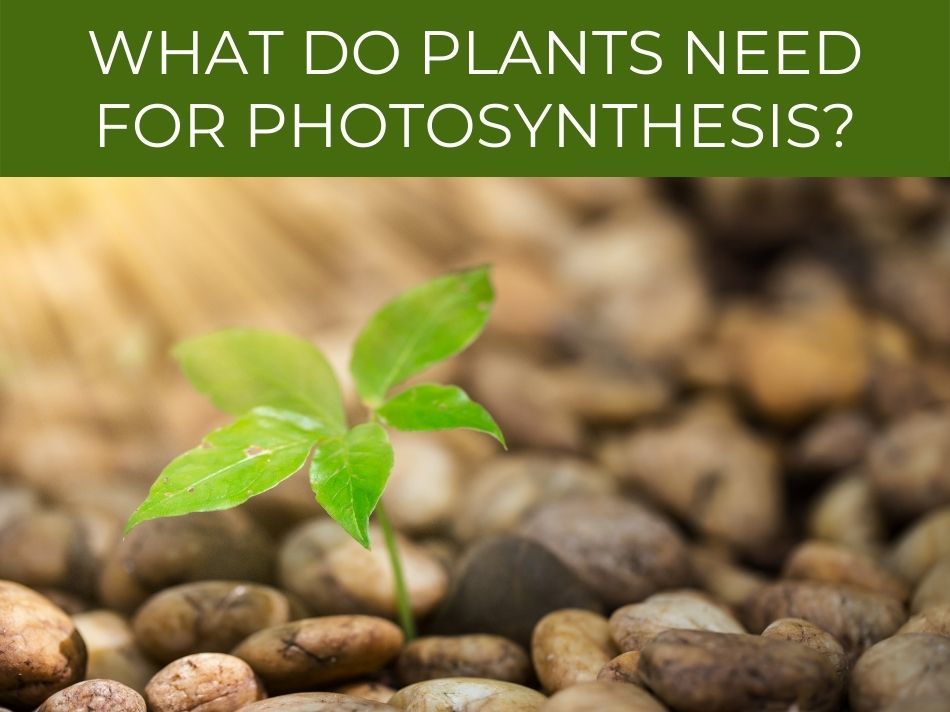
What do plants need for photosynthesis?
The simple answer is water, soil, and light, and those are the ingredients, but there are more things that are needed for plants to flourish.
Plants need some sort of structure to make those ingredients come together at the right time to get the reaction needed to grow the plant.
The raw materials are all around the plant, but the plant also needs its own parts to make photosynthesis happen.
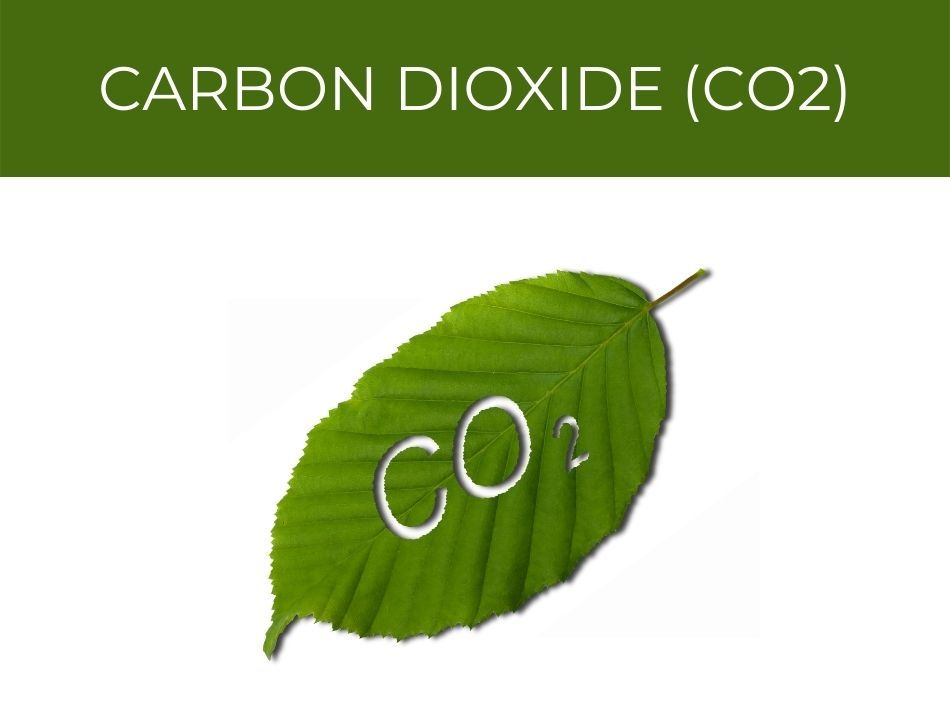
Plants need several things to grow: sunlight, water, air (carbon dioxide, CO2), along with small amounts of other nutrients like nitrogen, potassium, phosphorus, and other elements.Plants also require chlorophyll, a green pigment, which is used for photosynthesis.
Plants also need a period of darkness, which is when the sugars are produced.
Photosynthesis is how plants grow, and since we want good plants, it is good to understand how all this works.
The roots take in water and nutrients from the soil, and these make their way through the plant to the leaves.
Leaves also take in carbon dioxide.
A key to all this is the chloroplasts, which are where the water, nutrients, and soil are all combined.
Chloroplasts produce chlorophyll, which is a chemical in leaves.
When light hits the leaves, the cycle starts all over again.
See where in the plant photosynthesis takes place.
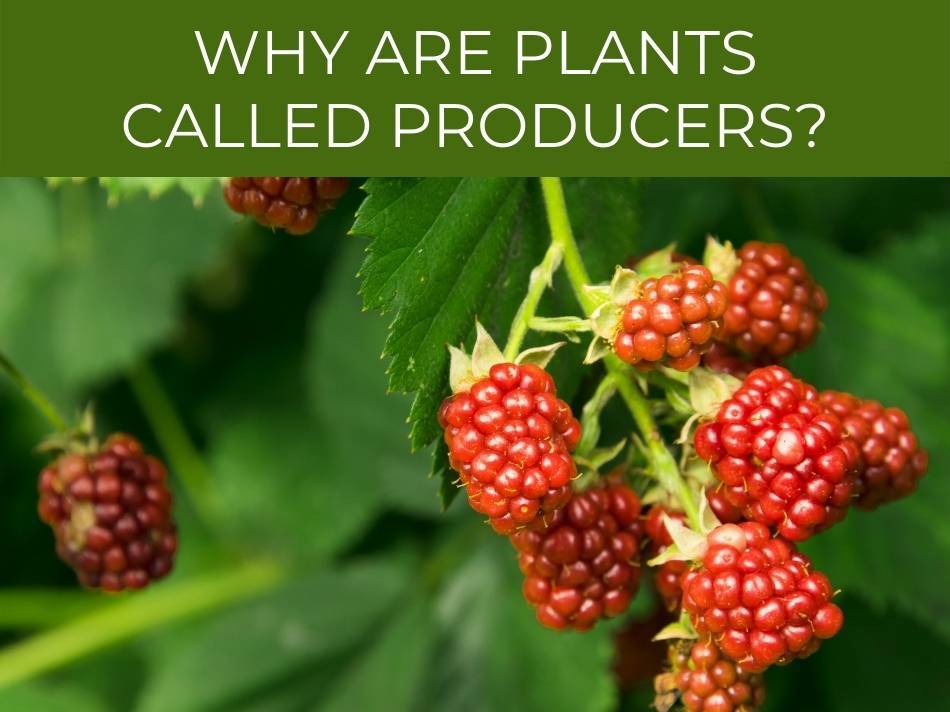
Why are plants called producers?
Plants produce their own food, and so they are called producers.
Humans and other animals eat plants, and other animals, which are digested and made into energy and other things that keep us alive.
Animals eat plants to get carbohydrates, while plants produce carbohydrates.
Plants are called producers because they make their own food. They get what they need to live and grow directly from the environment and combine those things, using photosynthesis, to make their own food and store it as a carbohydrate–typically glucose.
Humans and animals eat carbohydrates to get energy.
Plants produce carbohydrates and use them to create the energy they need to grow.
Carbon dioxide is essential and there is plenty of it in the atmosphere.
Sometimes we create too much and that causes pollution.
Plants produce oxygen that we need to live, so we depend on each other to some extent.
It would take a long time, but if there were no plants, eventually humans would run out of oxygen.
It is not clear whether plants would run out of carbon dioxide if there were no animals.


